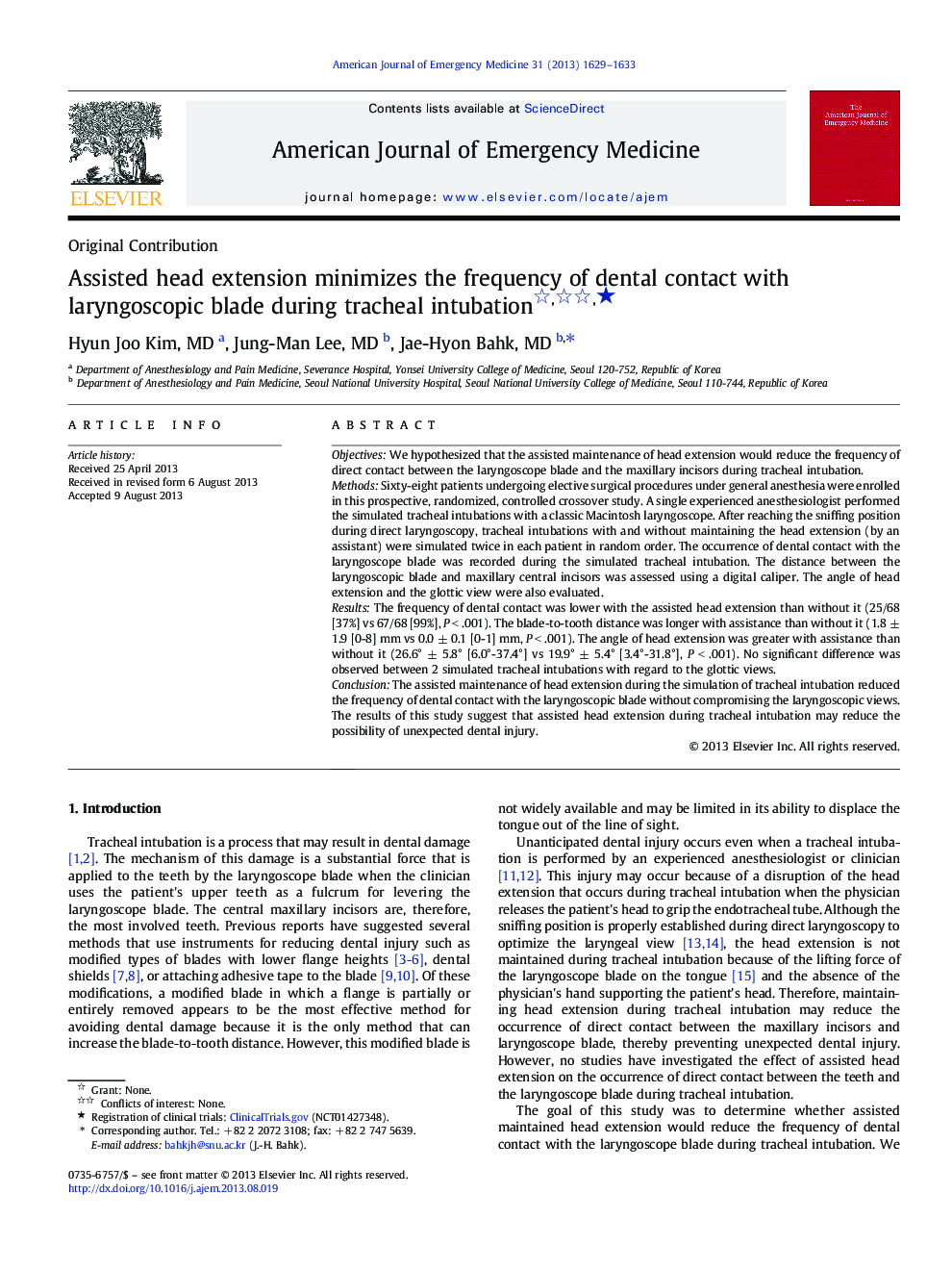| کد مقاله | کد نشریه | سال انتشار | مقاله انگلیسی | نسخه تمام متن |
|---|---|---|---|---|
| 3224832 | 1588123 | 2013 | 5 صفحه PDF | دانلود رایگان |

ObjectivesWe hypothesized that the assisted maintenance of head extension would reduce the frequency of direct contact between the laryngoscope blade and the maxillary incisors during tracheal intubation.MethodsSixty-eight patients undergoing elective surgical procedures under general anesthesia were enrolled in this prospective, randomized, controlled crossover study. A single experienced anesthesiologist performed the simulated tracheal intubations with a classic Macintosh laryngoscope. After reaching the sniffing position during direct laryngoscopy, tracheal intubations with and without maintaining the head extension (by an assistant) were simulated twice in each patient in random order. The occurrence of dental contact with the laryngoscope blade was recorded during the simulated tracheal intubation. The distance between the laryngoscopic blade and maxillary central incisors was assessed using a digital caliper. The angle of head extension and the glottic view were also evaluated.ResultsThe frequency of dental contact was lower with the assisted head extension than without it (25/68 [37%] vs 67/68 [99%], P < .001). The blade-to-tooth distance was longer with assistance than without it (1.8 ± 1.9 [0-8] mm vs 0.0 ± 0.1 [0-1] mm, P < .001). The angle of head extension was greater with assistance than without it (26.6° ± 5.8° [6.0°-37.4°] vs 19.9° ± 5.4° [3.4°-31.8°], P < .001). No significant difference was observed between 2 simulated tracheal intubations with regard to the glottic views.ConclusionThe assisted maintenance of head extension during the simulation of tracheal intubation reduced the frequency of dental contact with the laryngoscopic blade without compromising the laryngoscopic views. The results of this study suggest that assisted head extension during tracheal intubation may reduce the possibility of unexpected dental injury.
Journal: The American Journal of Emergency Medicine - Volume 31, Issue 12, December 2013, Pages 1629–1633